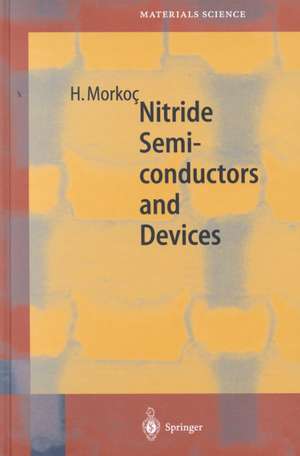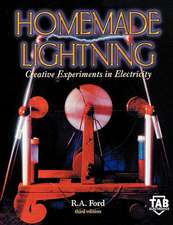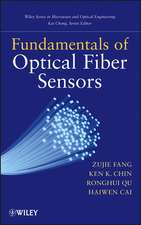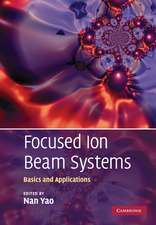Nitride Semiconductors and Devices: Springer Series in Materials Science, cartea 32
Autor Hadis Morkoçen Limba Engleză Hardback – 28 sep 1999
| Toate formatele și edițiile | Preț | Express |
|---|---|---|
| Paperback (1) | 1227.21 lei 43-57 zile | |
| Springer Berlin, Heidelberg – 4 oct 2012 | 1227.21 lei 43-57 zile | |
| Hardback (1) | 1231.78 lei 43-57 zile | |
| Springer Berlin, Heidelberg – 28 sep 1999 | 1231.78 lei 43-57 zile |
Din seria Springer Series in Materials Science
- 18%
 Preț: 1820.22 lei
Preț: 1820.22 lei - 18%
 Preț: 776.09 lei
Preț: 776.09 lei - 24%
 Preț: 689.68 lei
Preț: 689.68 lei - 18%
 Preț: 968.96 lei
Preț: 968.96 lei - 20%
 Preț: 568.94 lei
Preț: 568.94 lei - 18%
 Preț: 953.65 lei
Preț: 953.65 lei - 18%
 Preț: 902.36 lei
Preț: 902.36 lei - 18%
 Preț: 953.65 lei
Preț: 953.65 lei - 20%
 Preț: 948.41 lei
Preț: 948.41 lei - 18%
 Preț: 1143.07 lei
Preț: 1143.07 lei - 18%
 Preț: 1111.53 lei
Preț: 1111.53 lei - 18%
 Preț: 1103.62 lei
Preț: 1103.62 lei - 18%
 Preț: 1225.94 lei
Preț: 1225.94 lei -
 Preț: 473.91 lei
Preț: 473.91 lei - 18%
 Preț: 782.42 lei
Preț: 782.42 lei -
 Preț: 433.47 lei
Preț: 433.47 lei - 18%
 Preț: 1116.40 lei
Preț: 1116.40 lei - 18%
 Preț: 946.24 lei
Preț: 946.24 lei - 18%
 Preț: 945.20 lei
Preț: 945.20 lei - 15%
 Preț: 641.20 lei
Preț: 641.20 lei - 18%
 Preț: 958.56 lei
Preț: 958.56 lei - 18%
 Preț: 1224.36 lei
Preț: 1224.36 lei - 15%
 Preț: 644.82 lei
Preț: 644.82 lei - 24%
 Preț: 833.43 lei
Preț: 833.43 lei - 24%
 Preț: 1060.33 lei
Preț: 1060.33 lei - 18%
 Preț: 964.10 lei
Preț: 964.10 lei - 18%
 Preț: 1224.36 lei
Preț: 1224.36 lei - 18%
 Preț: 1221.20 lei
Preț: 1221.20 lei - 18%
 Preț: 946.87 lei
Preț: 946.87 lei - 18%
 Preț: 1842.31 lei
Preț: 1842.31 lei - 15%
 Preț: 643.34 lei
Preț: 643.34 lei - 18%
 Preț: 1246.32 lei
Preț: 1246.32 lei - 18%
 Preț: 956.81 lei
Preț: 956.81 lei - 18%
 Preț: 953.52 lei
Preț: 953.52 lei - 15%
 Preț: 637.59 lei
Preț: 637.59 lei - 24%
 Preț: 1060.87 lei
Preț: 1060.87 lei
Preț: 1231.78 lei
Preț vechi: 1502.17 lei
-18% Nou
Puncte Express: 1848
Preț estimativ în valută:
235.70€ • 246.71$ • 196.18£
235.70€ • 246.71$ • 196.18£
Carte tipărită la comandă
Livrare economică 31 martie-14 aprilie
Preluare comenzi: 021 569.72.76
Specificații
ISBN-13: 9783540640387
ISBN-10: 354064038X
Pagini: 516
Ilustrații: XXIV, 489 p. 274 illus., 7 illus. in color.
Dimensiuni: 155 x 235 x 33 mm
Greutate: 0.85 kg
Ediția:1999
Editura: Springer Berlin, Heidelberg
Colecția Springer
Seria Springer Series in Materials Science
Locul publicării:Berlin, Heidelberg, Germany
ISBN-10: 354064038X
Pagini: 516
Ilustrații: XXIV, 489 p. 274 illus., 7 illus. in color.
Dimensiuni: 155 x 235 x 33 mm
Greutate: 0.85 kg
Ediția:1999
Editura: Springer Berlin, Heidelberg
Colecția Springer
Seria Springer Series in Materials Science
Locul publicării:Berlin, Heidelberg, Germany
Public țintă
ResearchCuprins
1. Introduction.- 2. General Properties of Nitrides.- 2.1 Crystal Structure of Nitrides.- 2.2 Gallium Nitride.- 2.3 Aluminum Nitride.- 2.4 Indium Nitride.- 2.5 Ternary and Quaternary Alloys.- 2.6 Substrates for Nitride Epitaxy.- 2A Appendix: Fundamental Data for Nitride Systems.- 3. Electronic Band Structure of Bulk and QW Nitrides.- 3.1 Band-Structure Calculations.- 3.2 Effect of Strain on the Band Structure of GaN.- 3.3 k·p Theory and the Quasi-Cubic Model.- 3.4 Quasi-Cubic Approximation.- 3.5 Confined States.- 3.6 Conduction Band.- 3.7 Valence Band.- 3.8 Exciton Binding Energy in Quantum Wells.- 3.9 Polarization Effects.- 3A Appendix.- 4. Growth of Nitride Semiconductors.- 4.1 Bulk Growth.- 4.2 Substrates Used.- 4.3 Substrate Preparation.- 4.4 Substrate Temperature.- 4.5 Epitaxial Relationship to Sapphire.- 4.6 Growth by Hydride Vapor Phase Epitaxy (HVPE).- 4.7 Growth by OMVPE (MOCVD).- 4.8 Molecular Beam Epitaxy.- 4.9 Growth on 6H-SiC (0001).- 4.10 Growth on ZnO.- 4.11 Growth on GaN.- 4.12 Growth of p-Type GaN.- 4.13 Growth of n-Type InN.- 4.14 Growth of n-Type Ternary and Quaternary Alloys.- 4.15 Growth of p-Type Ternary and Quaternary Alloys.- 4.16 Critical Thickness.- 5. Defects and Doping.- 5.1 Dislocations.- 5.2 Stacking-Fault Defects.- 5.3 Point Defects and Autodoping.- 5.4 Intentional Doping.- 5.5 Defect Analysis by Deep-Level Transient Spectroscopy.- 5.6 Summary.- 6. Metal Contacts to GaN.- 6.1 A Primer for Semiconductor-Metal Contacts.- 6.2 Current Flow in Metal-Semiconductor Junctions.- 6.3 Resistance of an Ohmic Contact.- 6.4 Determination of the Contact Resistivity.- 6.5 Ohmic Contacts to GaN.- 6.6 Structural Analysis.- 6.7 Observations.- 7. Determination of Impurity and Carrier Concentrations.- 7.1 Impurity Binding Energy.- 7.2 Conductivity Type: HotProbe and Hall Measurements.- 7.3 Density of States and Carrier Concentration.- 7.4 Electron and Hole Concentrations.- 7.5 Temperature Dependence of the Hole Concentration.- 7.6 Temperature Dependence of the Electron Concentration.- 7.7 Multiple Occupancy of the Valence Bands.- 7A Appendix: Fermi Integral.- 8. Carrier Transport.- 8.1 Ionized Impurity Scattering.- 8.2 Polar-Optical Phonon Scattering.- 8.3 Piezoelectric Scattering.- 8.4 Acoustic Phonon Scattering.- 8.5 Alloy Scattering.- 8.6 The Hall Factor.- 8.7 Other Methods Used for Calculating the Mobility in n-GaN.- 8.8 Measured vis. a vis. Calculated Mobilities in GaN.- 8.9 Transport in 2D n-Type GaN.- 8.10 Transport in p-Type GaN and AlGaN.- 8.11 Carrier Transport in InN.- 8.12 Carrier Transport in AlN.- 8.13 Observation.- 9. The p-n Junction.- 9.1 Heterojunctions.- 9.2 Band Discontinuities.- 9.3 Electrostatic Characteristics of p-n Heterojunctions.- 9.4 Current-Voltage Characteristics on p-n Junctions.- 9.5 Calculation and Experimental I-V Characteristics of GaN Based p-n Juctions.- 9.6 Concluding Remarks.- 10. Optical Processes in Nitride Semiconductors.- 10.1 Absorption and Emission.- 10.2 Band-to-Band Transitions.- 10.3 Optical Transitions in GaN.- 10.4 Optical Properties of Nitride Heterostructures.- 11. Light-Emitting Diodes.- 11.1 Current-Conduction Mechanism in LED-Like Structures.- 11.2 Optical Output Power.- 11.3 Losses and Efficiency.- 11.4 Visible-Light Emitting Diodes.- 11.5 Nitride LED Performance.- 11.6 On the Nature of Light Emission in Nitride-Based LEDs.- 11.7 LED Degradation.- 11.8 Luminescence Conversion and White- Light Generation With Nitride LEDs.- 11.9 Organic LEDs.- 12. Semiconductor Lasers.- 12.1 A Primer to the Principles of Lasers.- 12.2 Fundamentals of Semiconductor Lasers.- 12.3 Waveguiding.- 12.4 Loss and Threshold.- 12.5 Optical Gain.- 12.6 Coulombic Effects.- 12.7 Gain Calculations for GaN.- 12.8 Threshold Current.- 12.9 Analysis of Injection Lasers with Simplifying Assumptions.- 12.10 Recombination Lifetime.- 12.11 Quantum Efficiency.- 12.12 Gain Spectra of InGaN Injection Lasers.- 12.13 Observations.- 12.14 A Succinct Review of the Laser Evolution in Nitrides.- References.
Caracteristici
Covers the major developments in light-emitting Nitride semiconductors Integrates physics, materials science, technology, and applications Covers both theory and practice Includes extensive tabular compilation of properties Reference book for researchers as well as a study text for graduate students in physics, chemistry, materials science and energy Includes supplementary material: sn.pub/extras






